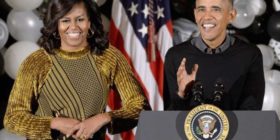Indians are accustomed to a political landscape dotted with parties that flourish in the fertile soil of fissures – be those of the regional, religious, caste or class variety. For those following the results from the Tamil Nadu Assembly elections last week, for instance, each alliance appeared to consist of more acronymed parties than there are parts of the alphabet soup of the US security establishment.
Most Western democracies do not sport such a multiplicity of political outfits. Their wardrobes are more spare. Canada, for example, has three major national parties. Further south, it becomes even more bare. The voter has two choices – Democrat blue or Republican red.
Never was there an opportunity to add some more colour to the terrain. Some may recall that in the distant past, before the primaries began in February, there was much consternation within Republican ranks that Donald Trump would raise just such a hue and cry. The magnate, if miffed, would go about an Independent run, was the fear that ran through the Grand Old Party’s establishment and they made him sign a pledge to remain reined in even if the voter rained on his parade. Never mind. Trump is now the establishment, and we could face the prospect of a duochrome contest as November.
It isn’t as if America hasn’t seen multiple names on a Presidential ballot in this century, just that beyond the brawn on top were contenders who couldn’t even be considered featherweight, at least in terms of probability of electoral success. In 2012, for example, the Libertarian Party fielded Gary Johnson and the Green Party nominated Jill Stein. Between them they totalled less than 1.5% of the votes polled. They created as many ripples in that poll as a skipping stone in an ocean.
But recent history reminds us of those also-rans who made waves. In 2000, activist Ralph Nader captured a little less than 3% of the vote although the nearly 100,000 he managed in Florida may have, along with those chads that hung, spoiled that race for Al Gore. Billionaire businessman Ross Perot made his own runs. In 1992, he received nearly 20% of the vote. Four years later, he polled just 8%.
For those who wish to see the United States join the rest of the democratic world and make their elections even more intricate by adding a few wild cards in the mix, there may still be slender hope. There remains chatter about Mitt Romney, the man from central casting for Presidents-to-be, taking the disaffection among conservatives with Trump to the hustings. As in the case of much electoral coverage, this is a study in advanced speculation, as some are even guessing who his running mate may be.
Then, of course, there’s the candidate who was actually an Independent just a year ago. That would be Bernie Sanders, the Vermont Senator, who’s only started flying the Democratic flag for this operation against Hillary Clinton. Sanders is obviously irate at the Democratic establishment as he fundraises for an insurgent to unseat the party’s chair (and Hillary acolyte) Debbie Wasserman Schulz from her House seat in Florida. Sanders and his millennial cohorts have just about as much regard for the party brass as Trump does for illegal immigrants.
Both scenarios, however, are long shots just as such candidacies would be. But it’s for the first time this century that such a possibility has even projected itself upon a political culture that’s so predictable.
While the two presumptive nominees, Trump and Clinton, could feature in posters for America’s Most Unwanted, given they are engaged in an unpopularity contest, there’s an opening as large as the Grand Canyon for a third option. Perhaps when Prime Minister Narendra Modi arrives in Washington in June (on the day of the final Super Tuesday of the primary season), he can bring the gift of multi-polar match-ups for American politicians to compensate for their continuing largesse to Pakistan, a country that keeps hosting America’s Most Wanted.






Leave a reply